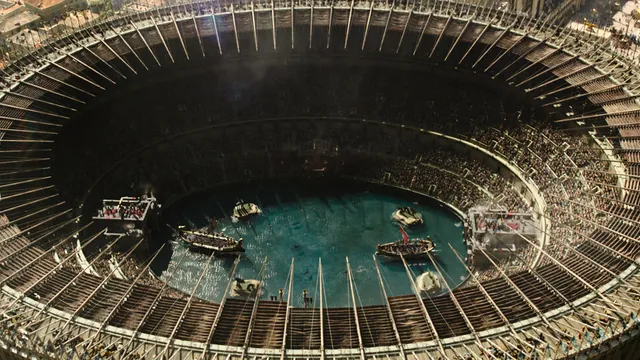
Epic naval battles in the Colosseum with sharks
2024-09-13 00:00- The sequel to the acclaimed 2000 film features epic naval combat scenes set in a water-filled Colosseum.
- Production designer Arthur Max emphasized that the sequel amplifies the visual scale and excitement of the original film.
- The film combines historical research with creative imagination, showcasing unique elements like sharks and a rhino in combat sequences.
Express your sentiment!
Insights
The upcoming sequel to the 2000 film is set to captivate audiences with its innovative approach to storytelling and visual effects. Scheduled for release on November 22, 2024, the film features thrilling naval battles staged in a Colosseum filled with water, a significant departure from traditional gladiatorial combat. This creative choice allows for a unique blend of historical elements and imaginative storytelling, appealing to both fans of the original and new viewers alike. Production designer Arthur Max highlighted the team's commitment to amplifying the grandeur of the original film. Extensive research was conducted, including visits to historical sites and museums, to ensure authenticity in the design of warships and combat scenes. This meticulous attention to detail is evident in the film's ambitious set pieces, which include not only sharks but also a rhino, showcasing the filmmakers' desire to push the boundaries of cinematic spectacle. Ridley Scott, the director, employed a hands-on approach by sketching scenes to guide the production team, blending historical accuracy with creative vision. This method has resulted in a film that is both visually stunning and narratively engaging, promising to deliver an epic experience for audiences. As anticipation builds for the film's release, it is clear that the combination of historical research and imaginative storytelling will set this sequel apart, making it a noteworthy addition to the legacy of the original film.
Contexts
Archaeologists have recently unveiled an ancient underwater structure off the coast of Italy, revealing hidden treasures that extend beyond Rome's well-known landmarks. This discovery highlights the rich history that lies beneath the Mediterranean waters, which has often been overlooked in favor of more prominent sites. The findings suggest that the area may have been significant in ancient times, possibly serving as a hub for maritime activities. This aligns with the historical context of naval battles, such as those that might have taken place in the Colosseum, where epic confrontations involving ships and even sharks were staged for public entertainment. The exploration of these underwater structures not only sheds light on the past but also raises questions about the cultural and historical significance of naval warfare in ancient Rome. Such events were not merely spectacles; they reflected the power dynamics and societal values of the time. As further exploration of these underwater sites continues, it is expected that more insights will emerge, enriching our understanding of ancient civilizations and their relationship with the sea.